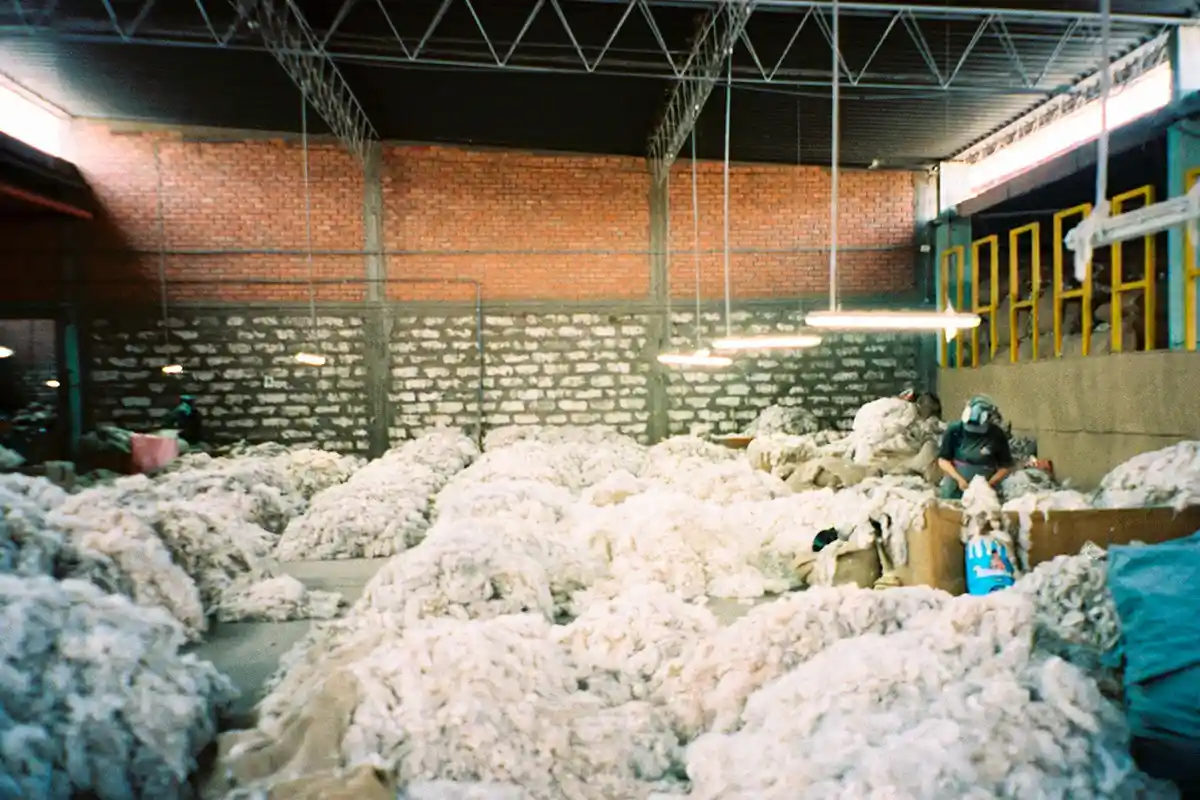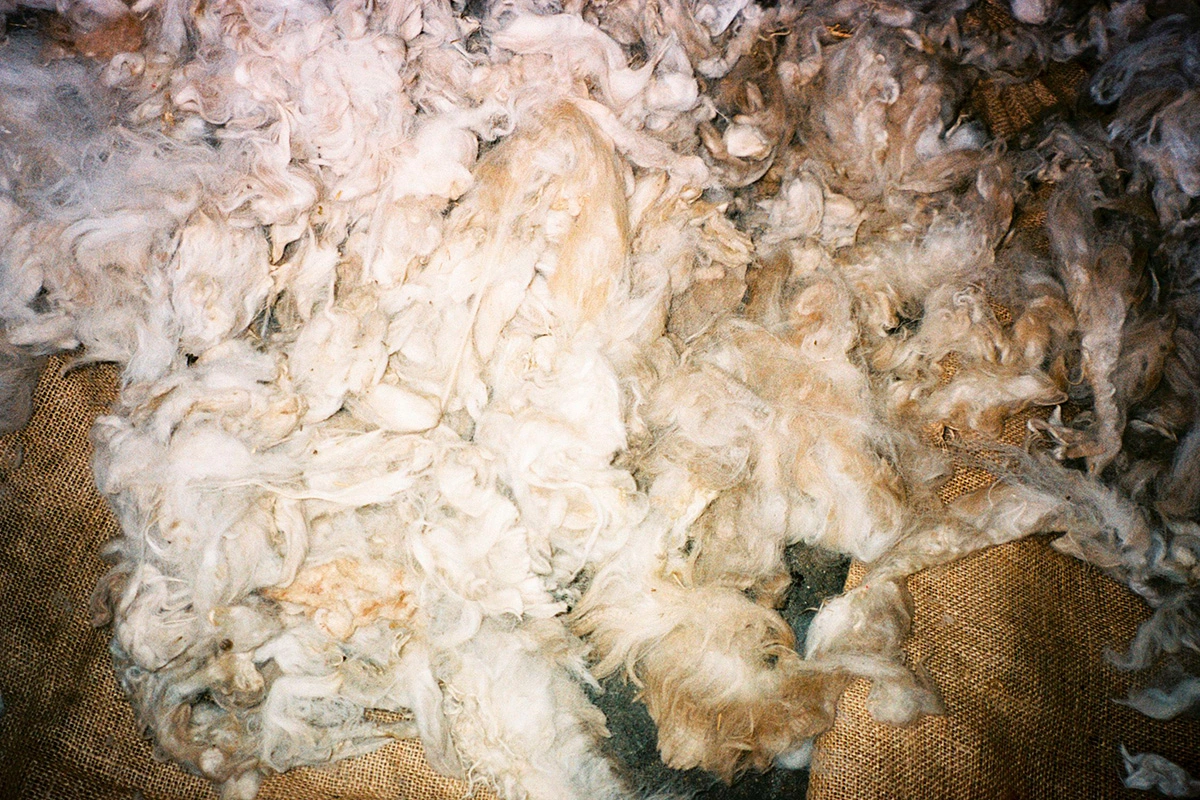Dana Davis, Vice President of Sustainability at Mara Hoffman, discusses local production as a solution to the global supply chain crisis of inflated costs
Localization of supply chains
The globalized supply chain has become an industry standard, yet with a shifting landscape, the longevity of this system lies in question. Local production could be one solution to the problem: cutting carbon emissions and costs, boosting local economies and decreasing resource-dependence. Further, local production translates to greater supply chain transparency and thus, a more sustainable production cycle. Is this the outlook of the fashion landscape?
Mara Hoffman helping to lead the charge
Ms Dana Davis, vice president of sustainability, product and business strategy, shares the story of the brand and its journey to domestic production. The former Parsons graduate, the twenty-two year-old Mara Hoffman, is the founder of the label committed to clean production and high-end style.
Ms Hoffman started the brand as the sole designer and seamstress, but as the company grew, she wanted to concentrate a portion of their external production domestically. Today, one hundred percent of their swimwear is made in Los Angeles, a large portion of their ready-to-wear in New York City’s garment district, and they are Climate Neutral certified.
Domestic sourcing within the United States
Two primary reasons for Mara Hoffman’s reliance on domestic sourcing is the increased accessibility that comes with being closer to factories, and the ability to maintain direct and transparent relationships without the complications of trade agreements and moving cost structures. Mara Hoffman looks strategically to local craftsmanship to identify regions more suited to certain aspects of the manufacturing process.
Speaking of the swimwear line, Ms Davis explains, «About 10 years ago, it was all made in New York. And it was challenging because you couldn’t find seamstresses who knew how to manufacture swimwear. It just wasn’t something that they had done. But, as we explored other areas in the U.S, we found that in California, there were skilled workers».
The same happened in their search for manufacturing sites for their knitwear program. This led them to North Carolina, a state with a history of knit manufacturing that has seen revitalisation over the last several years.
A multinational sourcing scheme, rooted in values
While Mara Hoffman is keeping on looking for onshore manufacturing, they still value their overseas partnerships. «Whether it’s our different artisan communities that we work with, or it’s a small workshop facility that’s mom and pop run, or some of our larger manufacturing facilities in Europe and in Asia. For us, it’s about what makes most sense to ensure the highest quality of the garment».
Local raw materials and centralized production skill sets
Mara Hoffman seeks out their international manufacturers based on access to both local raw materials and centralized production skill sets. This helps to limit the size of their supply chain within regions and focus on real local communities. In January 2015, Ms Hoffman had an «aha moment» that Ms Davis explains, revolutionized this approach to their supplier relationships.
«I had just had my son, my second child, and Mara was sitting on my couch. She starts crying and she looks at me and she says, ‘we can’t do this anymore’. I was confused and she said that we either have to shut this business down or we have to figure out how to do things better».
Principles over profit
For Mara Hoffman, the principles of the brand are more than profit, and Ms Davis credits the team for the innovative thinking that has allowed the company to do both. They see it as a responsibility of every brand. When Ms Davis returned from her maternity leave later that year, she was tasked with a comprehensive inspection of each aspect of their supply chain.
The brand had always cultivated close relationships with its suppliers, but now they wanted to look at every aspect of production. Ms Davis notified their suppliers of her visit and mapped out a ten-day itinerary of factory inspections and site tours. When she arrived, these facilities were completely unprepared for such an extensive audit, having had little experience with partners asking for this level of transparency. «Our ten-day trip ended up becoming a much longer experience because even though I had let our suppliers know our goal was transparency, they didn’t understand the level that we were asking for».
She elaborates that the reality of the clothing industry is that no country has all the skill sets and raw materials to support a full range brand. The company now rarely takes on new suppliers and only uses a small selection of materials, focusing on the domestic production they can do despite circumstances. As for the offshore chain, the brand now fully maps out every step of the process from fibers, weaving, and dyeing – often relying on key industry certifications such as Fairtrade and responsible fiber standards.
A responsible supply chain and strategic planning
With all the benefits that come with domestic and transparent manufacturing, Ms Davis still stresses the many obstacles they have had to overcome. First, extensive supply chain mapping through Excel becomes overwhelming and often requires specialized transparency software. But, options remain limited due to the lack of demand for such softwares. This has led them to seek out alternative solutions, even looking to the Blockchain. The most evident challenge is cost, especially given the current state of inflation.
On the surface, more sustainable options present as more expensive, but through strategic planning, Mara Hoffman has been able to minimize expenses. They are able to bulk order fabric, due to the limited material portfolio they produce with. In addition, the brand has shifted its printing process from water-intensive and polluting wet printing to digital methods. Whilst the upfront costs are higher, they were able to rework the prints to the exact garment patterns, which has ultimately led to savings.
Consumer investment in a responsible wardrobe
Davis highlights the incentives for consumers to invest in the brand’s higher price point. To ensure lasting value, they operate their own resale platform, Full Circle Marketplace, where customers can resell used pieces back to the brand and earn credits for their next purchase.
The future of the supply chain
Ms Davis also places emphasis on storytelling from brands to educate consumers on the true costs of clothing production to help them understand the value in higher prices. Major conglomerates, Kering, LVMH and Richemont, continue to globally expand, yet the question stands whether these purely international supply chains have a place in the future fashion industry. Ms Davis believes that there is a way for these brands to take on these practices and that many are already on that journey. «Everybody’s now analyzing how to re-evaluate the supply chain. And what does onshoring look like for everybody? It’s reinvesting in local communities, specific artists in communities, workforce development. What kind of training is needed to provide more individuals access to income?».
Ms Davis points out Chanel and their partnership with Custom Collaborative, the not-for-profit organization that helps women from all socio-economic backgrounds develop skills in garment design and construction. In January, Fondation Chanel announced the $300,000 three-year grant for the apprenticeship program.
The impact of legislation on the supply chain
According to Ms Davis, one of the most significant changes in New York is the recent proposal for transparency legislation. The New York Sustainability and Social Accountability Act is under review, but would serve as a piece of legislation in the fashion industry and the first U.S. law to be aimed at regulating its largest companies. It would require any retailer or manufacturer doing business in New York state and grossing more than $100 million to disclose at least 50% of their supply chain, issue a report on their social and environmental sustainability impact, and outline measures to alleviate this.
Whilst it will not directly impact Mara Hoffman, they welcome this type of progressive legislation. «We ride the coattails of a lot of the bigger brands. Whether they’re investing in alternative solutions or scaling new business ideas, those impact us. I look forward to having more of those tools accessible».
The future for Mara Hoffman; hemp and Climate Beneficial cotton
In the meantime, the company looks towards its onshoring, technology and resale, along with several other initiatives. The brand hopes to create more partnerships with certifying bodies and explore more sustainable fiber solutions such as hemp and Climate Beneficial cotton – fibers farmed in a way that limits the carbon footprint. Ms Hoffman and her team see this as an ongoing journey with no set parameters, it is a matter of constantly adapting and updating practices to produce the highest quality garment in the most ethical way possible.
Mara Hoffman
Mara Hoffman launched her label in 2000 after graduating from Parsons New School in New York City. She’s gone on to become a CFDA designer with a company that commits itself to transparency and ethics, producing a significant portion of their line within the United States.




















